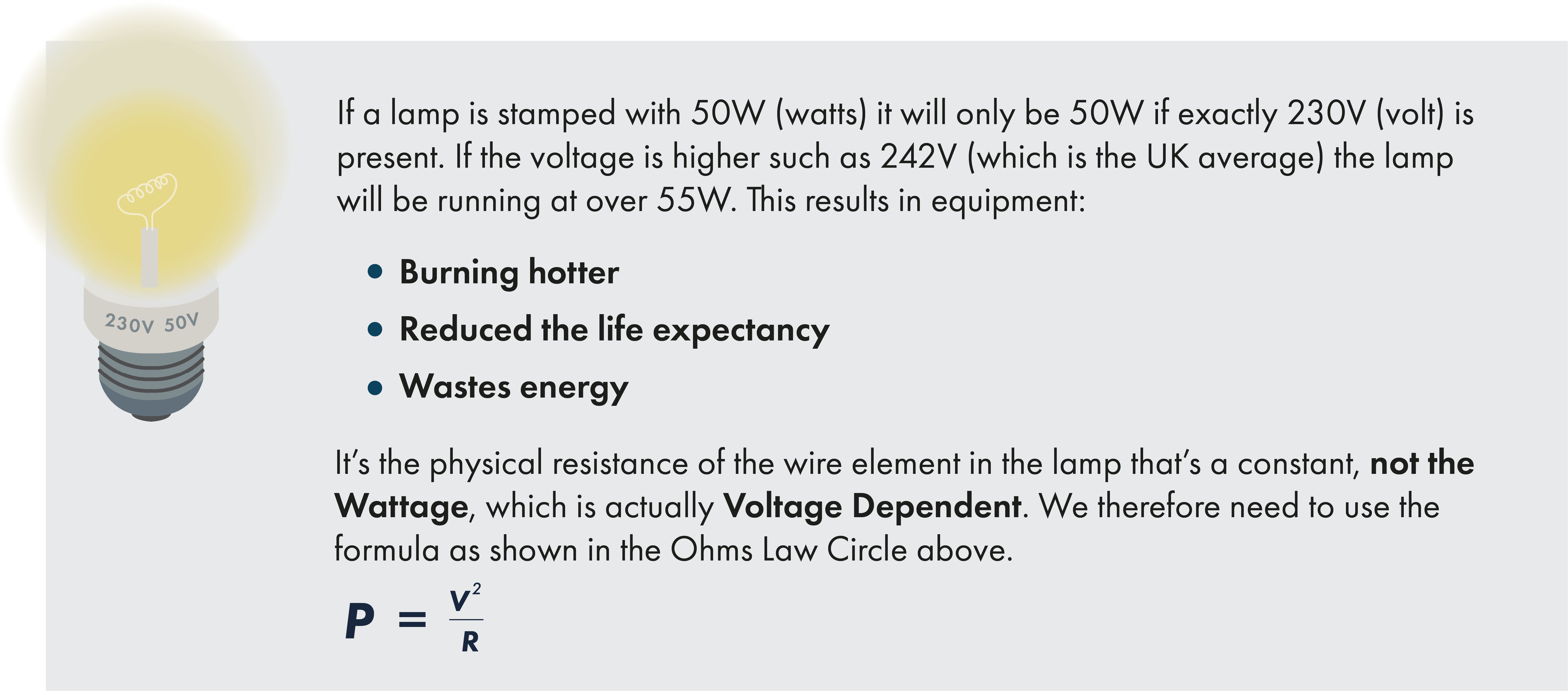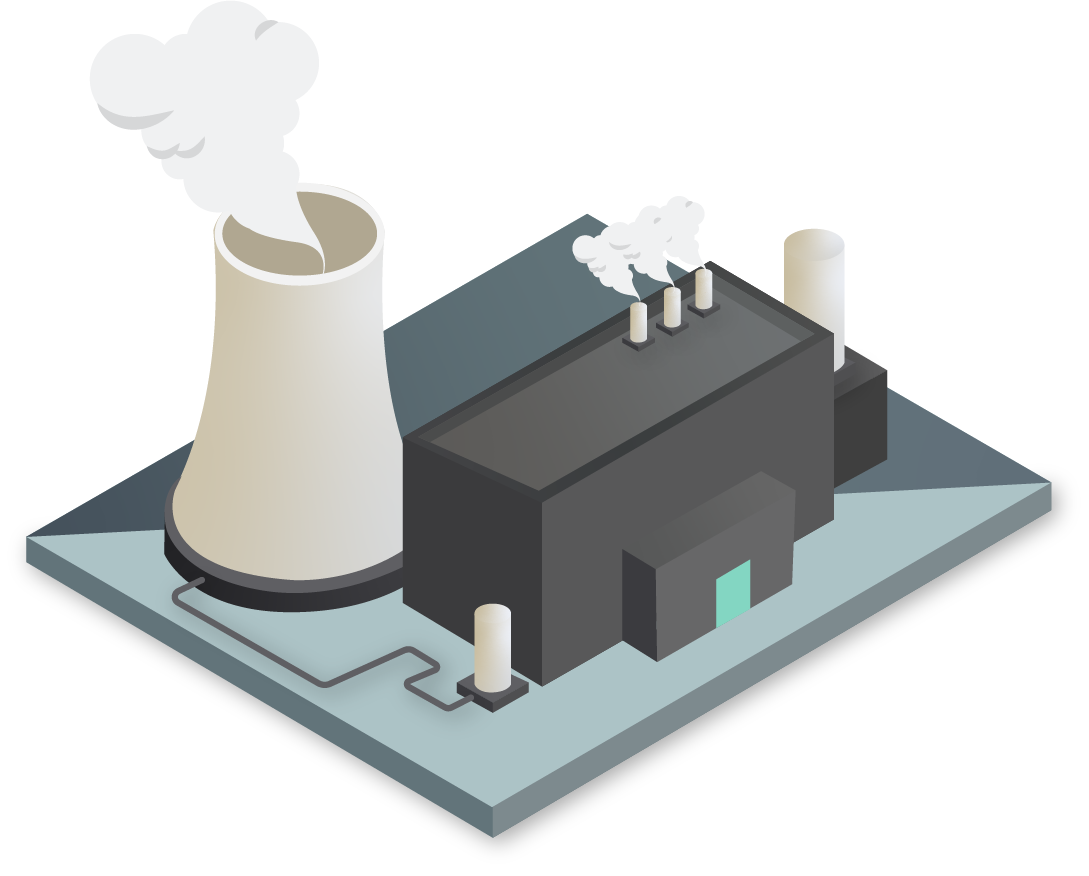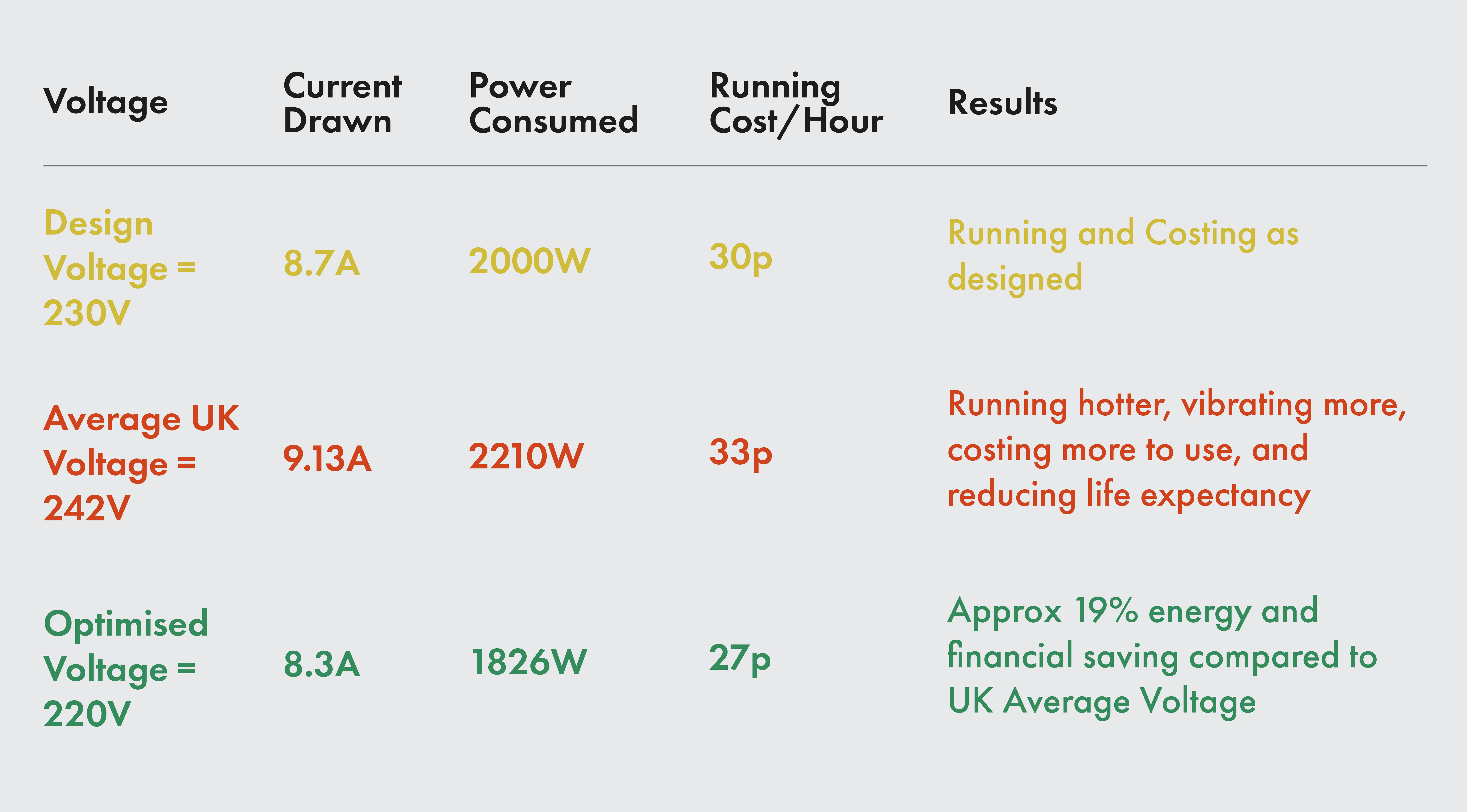Voltage Optimisation and Ohms Law
Understanding VO and Ohms Law

All Electricians will have studied Ohms Law at some time or other, usually as part of an apprenticeship. However, many go on to rarely use it fully during their career. Most will occasionally refer to a fraction of it, in a simple form,W(Power)= V(Volts) x A(Current), for working out adequate cable sizes.
Ohm’s law states that the voltage across a conductor is proportional to the current flowing through it, if all physical conditions
and temperatures remain constant. This often leads to the common misconception of assuming that Wattage is a constant and thereby the formula would intimate that if Voltage is reduced, the Current would go up. However, wattage is not a constant as we can illustrate below.

All Electricians will have studied Ohms Law at some time or other, usually as part of an apprenticeship. However, many go on to rarely use it fully during their career. Most will occasionally refer to a fraction of it, in a simple form,W(Power)= V(Volts) x A(Current), for working out adequate cable sizes.
Ohm’s law states that the voltage across a conductor is proportional to the current flowing through it, if all physical conditions
and temperatures remain constant. This often leads to the common misconception of assuming that Wattage is a constant and thereby the formula would intimate that if Voltage is reduced, the Current would go up. However, wattage is not a constant as we can illustrate below.


Your Equipment
With equipment like this hair dryer and commecial hand dryer (these are 100% Voltage Dependent) for every reduction or increase of 1% Voltage, a corresponding decrease or increase of 2%Watts of power is realised. Let’s take a closer look at what this means with typical domestic 230v ‘2kW’ Hair dryers or commercial Hand dryers.

You will see by the table below that depending what voltage is applied to the same piece of equipment, life expectancy and running costs (at typical 15p/KWh) can vary dramatically.


VO Savings
High voltage increases consumption, at a higher cost, to your business and our planet. UK electricity is supplied on average at 242 volts. All of our electrical equipment works at 220 volts. This means we are constantly wasting energy, paying for electricity we are not using and needlessly emitting excess carbon. Where incoming voltage is more than 234V there is potential financial saving of 8% – 19%

